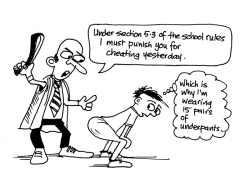Visible power
Visible forms of power are contests over interests which are visible in public spaces or formal decision making bodies. Often these refer to political bodies, such as legislatures, local government bodies, local assemblies, or consultative forums. However, they can equally apply to the decision-making arenas of organizations and even of social movements or other spaces for collective action.
The assumption in this approach is that access to these decision-making arenas by relatively powerless groups is relatively open. Those with grievances are able to articulate them in the formal decision-making processes and participate fully in the deliberations within them. Organizational and decision-making structures are considered accessible by all, so we can understand power but looking only at what occurs within them.
A second assumption is that by seeing who participates, who wins and who loses in these arenas, you can tell who has power. For instance, we can analyse which interests are able to maintain debate, whose interests prevail in key decisions, such as on a key policy or budget decision, and whose voices and interests are present, but have little influence. Little attention is paid in this approach to whose voices are not represented and why.
Strategies to challenge visible power often involve forms of lobbying, public advocacy, and mobilization to affect what decisions are made, be they on policies, budgets, rules or procedures. Similar strategies are used inside organizations to articulate voices through the ‘official’ decision-making channels. To read more about strategies go to the strategize and act pages or view the Power Matrix handout by Just Associates (see related resources).
Visible power assumes that decision-making arenas are neutral playing fields, in which any players who have issues to raise may engage freely. It also assumes that actors are conscious and aware of their grievances and have the resources, organization and agency to make their voice heard.
But there are many ways in which certain actors are kept from getting to the decision-making table and certain issues are kept off of the agenda. These are referred to as hidden power and invisible power. Read more about the academic evolution of debate on forms of power.

